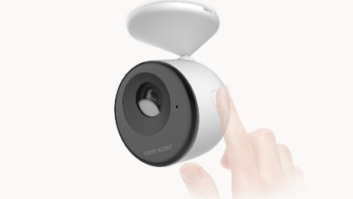TWICE:How have digital camera sales been so far this year, and where do you see them heading over the full 12 months?
Ben Arnold, The NPD Group: Through the first half of 2013, sales of detachable-lens cameras have been flat in units, unexpectedly. In 2012, DSLR grew a fairly robust 9 percent over 2011.
I think the market will continue to be soft for DSLR. There are an unprecedented number of new products hitting the market for holiday — new game consoles, wearables, 4K TV, new PC form factors that will all vie for a piece of the holiday gift wallet. DSLR has not performed well during the first half of the Mom/Dad/Grad period, with sales flat over Mother’s Day and down slightly (4 percent) over Father’s Day week. Mirrorless has been an even bigger disappointment, down 35 percent over Mother’s Day compared to the same week in 2012. Increased competition from smartphone manufacturers (which are all emphasizing the improved image capture capabilities of their devices) will also compete with the higher end of the point-and-shoot market.
Christopher Chute, IDC: Digital camera sales continue to be challenged by consumer dollars that have dramatically shifted towards tablets and other mobile products. For 2013 IDC forecasted a decline in U.S. compact cameras of 27 percent. Based on what appears to be a less-than successful Dads and Grads spring season, we will most likely downgrade that forecast further.
Eliott Peck, Canon USA: Overall the total market is declining at a more rapid and deeper pace than was forecast earlier this year. The digital compact segment, following worldwide trends, is off significantly. The bright spot has been long zoom, low-light capable and Wi-Fienabled cameras, all of which sell for a premium.
We have to adjust to consumer preferences and market reality and focus on delivering added value and promoting the advantages of why cameras with expanded optical ranges and advanced sensors produce superior still and video images.
Masahiro Horie, Nikon: Overall, Nikon has increased our position in the market, although we have seen a lot of change in the market. From January to June of this year, Nikon has increased market share fueled by strong enthusiast and entry-level DSLR sales. For compact cameras, the strongest segment this year has been the long-zoom “bridge type” cameras, which are the most promising segment in the declining compact market. DSLR sales have remained consistent, led by strong sales from entry-level and enthusiast categories, which offer additional accessory and lens sales opportunities.
With the help of a strong product line, we are confident we have the depth and breadth of offerings to satisfy many different types of consumers. Nikon offers very competitive high-end compacts, which continues to gain traction with consumers. We are also well positioned in the market where we see the most potential, which is the entry-level and enthusiast DSLR market, and our brand is consistently the top choice for consumers. With strong offerings including the D3200, D5200 and D7100, we think there is an opportunity for retailers to grow this market, as well as accessory and lens sales to drive additional revenue.
For the holiday season, we anticipate compact zoom models will continue to perform well, in addition to DSLR. For the mirrorless category, the Nikon 1 Advanced Camera with Interchangeable Lens (ACIL) system offers retailers a chance to sell to a new type of consumer, and the growing Nikon 1 System offers a very competitive feature set that appeal to many consumers. Additionally, Nikon will continue to support retailers with resources and products that appeal to consumers.
Stefan Guelpen, Panasonic: Sales for entry-level point-and-shoot (P&S) have virtually disappeared while we still enjoy better than expected demand for higher-end and specialty P&S cameras. Sales for mirrorless ILC have been trailing last year’s sales, which is a disappointment.
We expect to meet our objectives for higher end and specialty P&S cameras for the remainder of the year. We also anticipate exceeding our mirrorless ILC sales from last year — primarily due to new models that we are introducing in Q3 and Q4.
Ron Gazzola, Samsung: Samsung’s sales are doing well in a market undergoing a tremendous amount of change. With a focus on connectivity and interoperability with our whole ecosystem of products, our Smart Camera 2.0 platform and technologies have allowed us to distinguish ourselves from other products in the marketplace and create a truly compelling solution for photo enthusiasts at any level. Our new NX300 mirrorless camera is the most award-winning camera on our line to-date, and the buzz around further convergence products like the Galaxy Camera and recently announced Galaxy NX have also been strong.
We expect the shift from conventional camera to smart cameras will continue. This year Samsung has introduced a variety of smart cameras for shooters of any experience level. With the success of the Galaxy camera introduced last year and our new NX300 mirrorless camera, we’ve seen that consumers are passionate about the ability to share images on the go and enjoy the Android experience they’ve come to expect from Samsung. Our new Galaxy NX effectively marries these two product categories, providing consumers with the best in high-quality image capture and instant sharing.
Mark Weir, Sony: It’s widely acknowledged that industry growth rates have slowed (or declined) for both the compact and interchangeablelens segments. This can be attributed to rising ownership rates, but also can be a reflection of a general lack of new compelling products being offered to consumers.
At Sony, over the past year we have driven customer interest in the premium compact and mirrorless camera segments with the success of our RX100/RX1 and our E-mount cameras. We see plenty of opportunity in the second half – especially with our strong conventional offerings as well as our newly introduced concept models, including 4K Handycam, Music Video Recorder and Cybershot QX lens-style cameras, all of which we expect to create new user benefits and customer demand.
Jim Malcom, Ricoh: They are doing better. While there are companies that are feeling some pain, Ricoh Imaging is in a unique position to benefit from our nimble size resulting in opportunities to take share in a declining market.
We forecast the industry to decline. Ricoh Imaging, however, will continue to grow through innovative products such as Ricoh GR, the most widely accepted fixed-lens premium compact with an APSC- sized sensor, and the introduction of the Pentax K-50 DSLR, featuring outstanding specifications at an exceptional price point with 120 color combinations. For Ricoh Imaging, this is the right time to produce the right innovation at the right price.
Scott Hardy, Polaroid: For Polaroid, sales have been very strong for both our instant and our more “traditional” digital imaging products. We’ve expanded our product range considerably and secured additional placement with several major brick-andmortar and online retailers for our still cameras and camcorders. In addition, the very successful launch of the Polaroid Fotobar stores this year has helped increase the buzz around the whole brand.
This balance of this year looks really strong for many of our digital lines with several key placements for the holiday buying season. We are very excited that the interchangeable-lens Android-powered smart camera, the Polaroid iM1836, will begin selling at Wal-Mart in September, and that our expanded line of mountable sports video cameras is available on BestBuy.com. In addition, our instant lineup is always a popular seller, and Polaroid Fotobar has launched two stores so far and is set to launch four more before year end.













